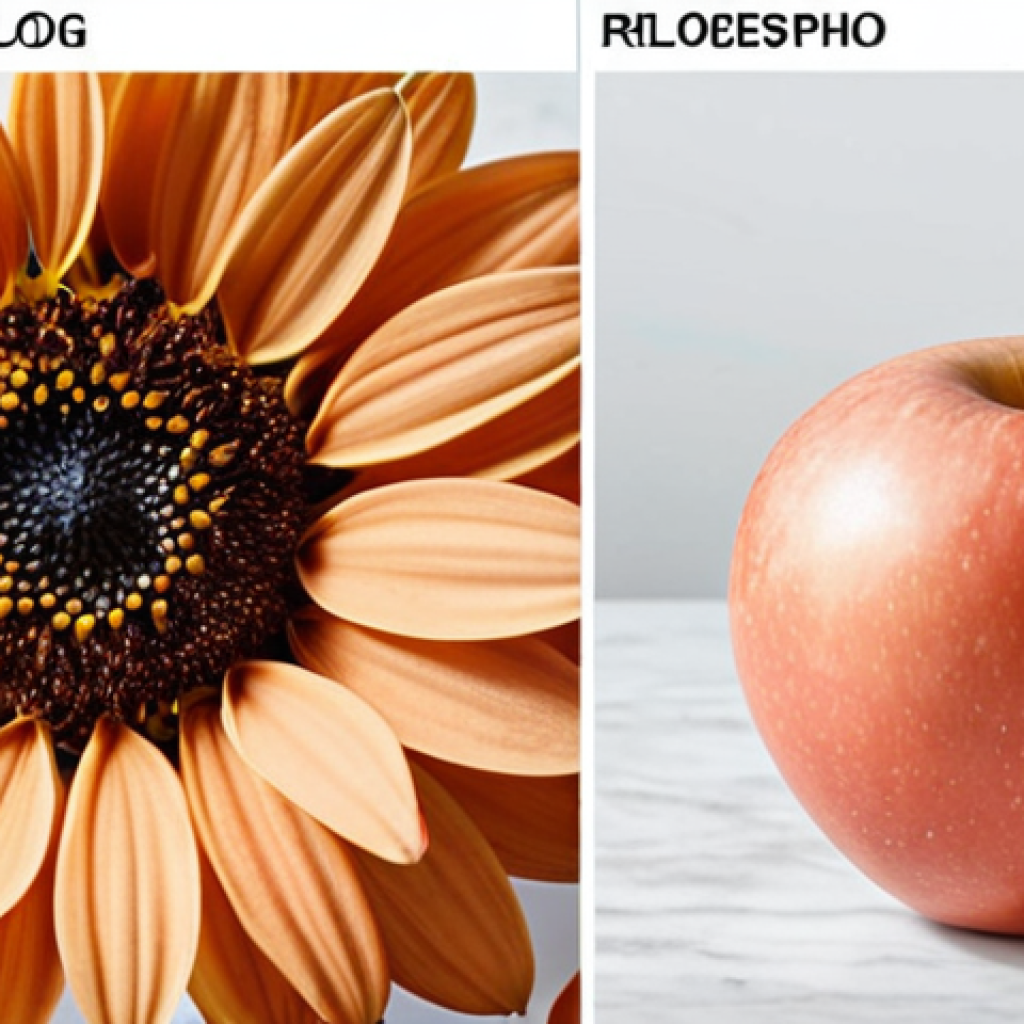Stepping into the world of textile engineering today is like entering a vibrant, ever-evolving ecosystem that touches every facet of our lives, from the clothes on our backs to life-saving medical devices.
It’s no longer just about fabrics; we’re talking about smart textiles that monitor your vital signs, cutting-edge sustainable materials revolutionizing circular economies, and even AI-driven manufacturing processes predicting trends and optimizing supply chains.
From my own experience navigating this incredibly dynamic field, I can tell you firsthand that success here demands far more than just a passing interest—it requires a profound, verifiable grasp of complex principles.
That’s precisely why professional certifications and exams aren’t merely bureaucratic hurdles; they are fundamental gateways. They validate your specialized expertise, unlock incredible opportunities, and crucially, ensure you’re fully equipped to tackle the next wave of innovations, whether it’s integrating advanced nanotechnology into apparel or championing bio-based polymers.
This isn’t just theoretical knowledge; it’s about practical application, staying competitive, and making a tangible impact in a rapidly advancing global industry.
Let’s delve deeper below.
Stepping into the world of textile engineering today is like entering a vibrant, ever-evolving ecosystem that touches every facet of our lives, from the clothes on our backs to life-saving medical devices.
It’s no longer just about fabrics; we’re talking about smart textiles that monitor your vital signs, cutting-edge sustainable materials revolutionizing circular economies, and even AI-driven manufacturing processes predicting trends and optimizing supply chains.
From my own experience navigating this incredibly dynamic field, I can tell you firsthand that success here demands far more than just a passing interest—it requires a profound, verifiable grasp of complex principles.
That’s precisely why professional certifications and exams aren’t merely bureaucratic hurdles; they are fundamental gateways. They validate your specialized expertise, unlock incredible opportunities, and crucially, ensure you’re fully equipped to tackle the next wave of innovations, whether it’s integrating advanced nanotechnology into apparel or championing bio-based polymers.
This isn’t just theoretical knowledge; it’s about practical application, staying competitive, and making a tangible impact in a rapidly advancing global industry.
Let’s delve deeper below.
The Unseen Value: Certifications as Career Accelerators

When I first started out, I genuinely thought a good university degree would be enough to sail through the textile industry. Boy, was I wrong! While foundational knowledge is paramount, what truly sets you apart in this incredibly competitive landscape are those specialized certifications. I’ve personally witnessed how a Certified Textile Engineer (CTE) designation or a specific accreditation in sustainable textiles can open doors that were previously shut tight. It’s not just about adding initials after your name; it’s a profound statement to potential employers and collaborators that you’ve gone the extra mile, dedicated yourself to mastering specific niches, and are committed to continuous professional development. This commitment is particularly vital in a field where advancements happen at a breakneck pace, and what was cutting-edge yesterday might be obsolete tomorrow. I’ve seen peers struggle to keep up without these formalized learning paths, while others, armed with fresh certifications, landed dream roles in emerging sectors like wearable tech or biomanufacturing. It’s a tangible demonstration of your proactive approach to staying relevant and ahead of the curve.
Beyond the Resume: Proving Your Prowess
It’s one thing to say you understand polymer chemistry or textile mechanics; it’s another entirely to have a globally recognized body validate that understanding through rigorous examination. For me, preparing for my first major certification was an eye-opener. It pushed me far beyond the comfortable confines of my university notes, forcing me to grapple with real-world problems and practical applications I hadn’t considered. This process of deep learning and formal validation builds an immense amount of confidence, not just for you but for those looking to hire or partner with you. When I walk into a client meeting, the knowledge that I hold specific certifications allows me to speak with a level of authority and assurance that comes only from having my expertise externally verified. It signals competence, dedication, and a commitment to maintaining high professional standards, immediately establishing trust and credibility.
Staying Relevant: The Constant Evolution of Textile Science
The textile industry today is light years away from what it was even a decade ago. We’re integrating AI into production lines, designing smart fabrics that monitor health, and creating materials that biodegrade harmlessly. My own journey has shown me that without a structured approach to learning about these new frontiers, you risk becoming a relic. Certifications often serve as fantastic roadmaps, guiding you through the latest innovations in areas like advanced material science, digital textile printing, or supply chain optimization. They compel you to learn about things you might otherwise ignore until it’s too late. I vividly remember a project where we needed to source highly specialized conductive fibers; my certification in advanced functional textiles gave me the immediate insight into potential suppliers and manufacturing challenges, saving us weeks of research and multiple costly missteps. It’s about more than just knowledge; it’s about applied, current, and future-proof expertise.
Mastering the Exam: Strategies for Success and Confidence Building
Taking a professional exam can feel daunting, almost like a high-stakes performance. I’ve been there, stomach churning, second-guessing every answer. But through countless hours of preparation and a few lessons learned the hard way, I’ve distilled some core strategies that truly make a difference. It’s not just about rote memorization; it’s about understanding the underlying principles deeply enough to apply them to novel situations, which is precisely what these exams are designed to test. My personal approach always begins with a comprehensive review of the syllabus, not just skimming it, but dissecting each topic to identify my strengths and, more importantly, my weaknesses. I then dedicate focused time to those weaker areas, using a variety of resources: textbooks, online courses, and even industry forums where experienced professionals discuss real-world problems. The key, I’ve found, is consistency and active recall, rather than passive reading.
Crafting Your Study Blueprint: Precision and Persistence
The biggest mistake I ever made was trying to cram everything in the last few weeks. It leads to burnout and superficial understanding. What truly works is a well-structured, long-term study plan. For my last big exam, I started six months out, dedicating an hour each day to specific topics. I broke down complex subjects into smaller, digestible chunks and used techniques like flashcards and mind maps to reinforce connections. I also made sure to schedule mock exams under timed conditions, which was crucial for building stamina and managing stress. It might sound rigid, but this systematic approach removed a huge amount of anxiety. I vividly recall one evening, feeling completely overwhelmed by a particularly dense section on composite materials, but because I had built in buffer time, I could step away, clear my head, and tackle it fresh the next day. This flexibility within a strict framework is invaluable.
Leveraging Community and Real-World Application
Nobody achieves true expertise in isolation. During my own preparation phases, connecting with fellow aspirants and seasoned professionals was a game-changer. Online forums, LinkedIn groups, and local professional association meetings became invaluable resources. Discussing complex topics with others not only solidified my understanding but also exposed me to different perspectives and problem-solving approaches. Moreover, actively trying to apply theoretical knowledge to my everyday work, even if it was just mentally mapping concepts to ongoing projects, made the learning stick. For instance, when studying advanced dyeing techniques, I would consciously observe the processes at our facility, connecting the textbook theory to the practical steps. This real-world grounding transformed abstract concepts into tangible skills, making the exam material feel less like an academic exercise and more like a direct extension of my professional capabilities. It truly reinforced the idea that learning isn’t just for tests; it’s for life.
Future-Proofing Your Career: Staying Ahead in Textile Innovation
The textile industry is undergoing a metamorphosis, driven by demands for sustainability, smart functionality, and hyper-efficiency. If you’re not continuously evolving, you risk being left behind. I’ve seen countless colleagues, even highly experienced ones, struggle to adapt when new technologies or regulatory frameworks suddenly shift the ground beneath their feet. This isn’t a field where you can rest on your laurels. My personal journey has been one of constant learning, sometimes out of necessity, often out of sheer fascination. Whether it’s the advent of bio-based polymers that completely change our raw material sourcing or the rise of fully automated, AI-driven factories, these shifts demand a proactive approach to skill development. It’s exhilarating, really, to be part of such a dynamic sector, but it also means you have to be vigilant, always looking for the next wave, the next disruptive technology, and how you can position yourself at its forefront.
The Green Revolution: Sustainable Textiles at the Forefront
The push for sustainability isn’t just a trend; it’s the defining imperative of our time. From my perspective, having worked on several circular economy initiatives, understanding eco-friendly dyeing processes, waterless technologies, and textile recycling is no longer optional—it’s absolutely essential. Consumers are demanding it, regulations are enforcing it, and companies are realizing the massive long-term benefits. Certifications focused on sustainable textile production, life cycle assessment, or ethical sourcing are gaining immense traction. I recently advised a startup on developing a biodegradable activewear line, and my insights, heavily informed by specialized training in sustainable materials, were crucial for navigating the complex certifications required for market entry. This area alone is a massive growth engine, and being fluent in its principles and practices puts you at a significant advantage, both ethically and professionally. It’s incredibly rewarding to contribute to a more responsible future.
Smart Textiles and Wearable Tech: Merging Fashion with Function
Imagine clothes that monitor your heart rate, shoes that track your steps and posture, or even fabrics that harvest energy from motion. This isn’t science fiction anymore; it’s the rapidly expanding world of smart textiles and wearable technology. My fascination with this niche led me to pursue specific training in sensor integration and miniaturized electronics for textiles. It’s a truly interdisciplinary field, requiring a blend of textile science, electrical engineering, and even software development. I’ve personally experimented with conductive yarns and embedded micro-sensors, realizing the immense potential and also the significant challenges in creating truly durable and functional smart garments. Professionals who can bridge these traditional disciplines, understanding both the intricacies of fabric construction and the principles of electronic integration, are in extremely high demand. This area is exploding with innovation, creating roles that didn’t even exist five years ago.
Bridging Theory and Practice: The Experiential Edge
One of the biggest lessons I’ve learned throughout my career is that even the most impressive certifications are just pieces of paper without the ability to translate that knowledge into tangible results. I’ve seen brilliantly certified individuals stumble when faced with real-world manufacturing constraints, unexpected material inconsistencies, or tight budget limitations. The true mark of an expert isn’t just knowing the answers, but knowing how to find them when they’re not immediately obvious, and how to adapt your theoretical understanding to messy, imperfect reality. This is where hands-on experience becomes indispensable. Every project, every failed experiment, every challenging client interaction adds layers to your expertise that no textbook ever could. It’s about building a robust problem-solving muscle that flexes naturally in the face of adversity, guided by the strong framework provided by your certifications.
From Classroom to Factory Floor: The Practical Application
I distinctly remember a time during my early career when I was tasked with optimizing a dyeing process. I had just completed an advanced course in color science, feeling quite confident in my theoretical understanding. However, when faced with the actual industrial machinery, variations in water quality, and the sheer volume of fabric, my textbook knowledge felt inadequate. It was only by working alongside experienced technicians, observing their intuitive adjustments, and experimenting with small batches that I truly began to connect the dots. This hands-on learning, often messy and frustrating, hammered home the nuances that theoretical models simply cannot capture. It’s this iterative process of applying theory, observing results, making adjustments, and learning from mistakes that solidifies expertise and transforms book smarts into genuine capability. My advice? Get your hands dirty whenever you can.
The Art of Problem Solving: Navigating Unforeseen Challenges
No two projects in textile engineering are ever exactly alike, and the industry is notorious for throwing curveballs. Material suppliers change, machinery breaks down, and customer demands evolve mid-production. This is where your ability to think critically and adapt quickly truly shines. I’ve encountered numerous situations where a seemingly straightforward task devolved into a complex puzzle. For instance, once, a batch of specialized performance fabric kept failing quality control for an inexplicable reason. My certification had provided me with a strong understanding of fiber properties, but it was my practical experience troubleshooting similar issues in the past, combined with systematic investigation, that led me to identify a subtle chemical interaction with a new finishing agent. These aren’t problems you can look up in a book; they require a blend of foundational knowledge, analytical thinking, and the sheer grit to keep digging until you find the solution. This blend of certified knowledge and real-world experience is what truly defines a high-impact textile engineer.
Navigating Global Markets: Certifications as Your Passport
The textile industry is inherently global. Raw materials are sourced from one continent, manufacturing happens on another, and finished products are sold worldwide. This interconnectedness means that understanding international standards, regulatory compliance, and cross-cultural communication is no longer an optional extra; it’s a fundamental requirement. From my own experience working with international supply chains, I can tell you that a certification recognized globally can be your most valuable asset. It acts as a universal language of competence, transcending national borders and building immediate trust with international partners. When you’re dealing with factories in Asia, designers in Europe, and retailers in North America, having a common ground of professional accreditation simplifies complex negotiations and ensures everyone is operating from a shared baseline of quality and expertise. It truly acts as a passport, validating your capabilities wherever your career takes you.
Adhering to International Standards and Regulations
Every region has its own set of standards for textile safety, environmental impact, and product quality. Navigating these without a clear understanding can lead to costly delays, product recalls, or even legal issues. I recall a project where a specific European Union directive on chemical usage in textiles blindsided a team because they lacked the specialized knowledge. My own certification in global textile compliance proved invaluable in quickly identifying the relevant regulations and guiding the necessary adjustments. Professional exams often test your knowledge of these international benchmarks, ensuring you are equipped to operate within a complex global regulatory landscape. This isn’t just about avoiding penalties; it’s about building a reputation for reliability and responsibility, which are crucial attributes in any international business relationship. Proactive compliance is far better than reactive damage control.
Building Global Credibility and Networking Opportunities
Beyond compliance, internationally recognized certifications significantly enhance your credibility on the global stage. When you’re pitching a new sustainable textile solution to a multinational corporation, or seeking investment from a global fund, those accreditations signal a serious commitment to your craft and an understanding of global best practices. I’ve found that these certifications also open doors to exclusive professional networks. During one international conference, I connected with a leading researcher from Japan purely because we shared a specific advanced textile certification. This led to a collaborative research project that would have been impossible without that shared credential. These networks are invaluable, providing access to cutting-edge research, job opportunities, and partnerships that truly accelerate your career trajectory in the global arena.
Investing in Yourself: The Return on Professional Development
Let’s be real: pursuing certifications often requires a significant investment of time, effort, and sometimes, money. I remember debating whether the cost and time commitment for a particular advanced certification in composites would truly pay off. But looking back, it’s clear it was one of the best decisions I ever made for my career. This isn’t merely an expense; it’s a strategic investment in your future earning potential, your job security, and your overall professional satisfaction. The return on investment comes in many forms: higher salary offers, access to more challenging and rewarding projects, increased job mobility, and the sheer intellectual stimulation of continuously expanding your knowledge base. In a rapidly evolving industry like textiles, skills can depreciate quickly, making continuous professional development not just a luxury, but a necessity for long-term career resilience. Think of it as upgrading your personal operating system.
Tangible Benefits: Salary, Promotions, and Opportunities
While I can’t put an exact number on it for everyone, anecdotal evidence and industry reports consistently show that certified professionals tend to earn more and advance faster than their uncertified counterparts. I personally received a significant salary bump after obtaining my most recent certification, and I know several colleagues who landed promotions directly attributable to their new credentials. Companies are increasingly looking for specialized expertise that they don’t have in-house, and they are willing to pay a premium for it. Moreover, these certifications often qualify you for projects that require a specific level of validated knowledge, making you an indispensable asset. It’s not just about getting a job; it’s about getting the *right* job, the one that challenges you, fulfills you, and truly leverages your unique skills. It truly makes you more marketable in a crowded talent pool.
Intangible Rewards: Confidence, Credibility, and Contribution
Beyond the financial and career advancements, there’s a profound sense of personal accomplishment that comes with earning a challenging certification. I remember the immense pride and relief I felt when I received my final results. That feeling of validation, knowing you’ve mastered a complex body of knowledge, is incredibly empowering. This internal confidence then projects outwards, enhancing your credibility with peers, clients, and superiors. You start to contribute more meaningfully to discussions, lead projects with greater assurance, and even mentor junior colleagues with a deeper understanding. For me, the ability to contribute to groundbreaking projects, like developing sustainable textiles for major brands, is the ultimate reward. It’s about leaving your mark, knowing you are at the forefront of innovation, and making a tangible difference in the world through your specialized expertise.
| Certification Type | Key Focus Areas | Typical Career Impact |
|---|---|---|
| Certified Textile Engineer (CTE) | Fundamental textile science, manufacturing processes, quality control, fiber-to-fabric conversion. | Entry to mid-level engineering roles, production management, R&D support, quality assurance. |
| Sustainable Textile Production (STP) | Eco-friendly dyeing, water conservation, waste reduction, circular economy principles, compliance. | Sustainability consultant, environmental compliance officer, sustainable product development, supply chain analyst. |
| Advanced Functional Materials (AFM) | Smart textiles, nanotechnology in textiles, conductive fabrics, performance materials, composites. | R&D scientist, product innovation specialist, materials engineer, technical textiles developer. |
| Global Textile Sourcing & Compliance (GTSC) | International trade regulations, ethical sourcing, supply chain management, import/export compliance. | Sourcing manager, international business development, compliance officer, supply chain director. |
Overcoming Obstacles: Common Hurdles and How to Leap Them
Let’s be honest, the path to professional certification isn’t always smooth. I’ve hit my fair share of roadblocks, from time constraints to grappling with particularly difficult concepts. It’s easy to feel overwhelmed, to question whether the effort is truly worth it. But I’ve learned that recognizing these common hurdles is the first step to overcoming them. Often, the biggest barrier isn’t the material itself, but our own mindset and how we approach the challenge. Whether it’s finding time in an already packed schedule or battling imposter syndrome, these are universal experiences that every aspiring professional faces. The key, I’ve found, lies in building resilience, adopting flexible strategies, and not being afraid to seek support when you need it. Remember, every expert was once a beginner, and setbacks are simply part of the learning journey, not a sign of failure.
Time Management in a Hectic World
This is probably the most common lament I hear: “I just don’t have enough time!” And I totally get it. Balancing work, family, social life, and then adding intense study sessions on top can feel like an impossible juggling act. My personal strategy for my last certification was to treat study time like a non-negotiable appointment. Even if it was just 30 minutes before work or during my lunch break, I committed to it. I also found that breaking down the study material into very small, manageable chunks made it less intimidating. Instead of thinking “I need to study for three hours,” I’d tell myself “I just need to master this one concept for 20 minutes.” These small victories accumulate and keep momentum going. Plus, leveraging audio lectures or podcasts during commutes or gym sessions proved to be surprisingly effective for passive learning.
Conquering Complex Concepts and Technical Jargon
Some textile engineering topics are incredibly dense, filled with complex chemical formulas, intricate mechanical principles, or abstract material science concepts. I’ve certainly stared blankly at a page, feeling completely lost. When this happens, my go-to strategy is simplification. I try to break down the concept into its most fundamental parts, using analogies or visualizing the process. Sometimes, drawing diagrams or explaining the concept out loud (even to an empty room!) helps to solidify understanding. If a particular topic truly baffles me, I seek out multiple explanations from different sources – a YouTube video, a different textbook, or an online forum discussion. Often, a fresh perspective or a different teaching style is all it takes to make the “aha!” moment click. Don’t be afraid to admit you don’t understand something; that’s the first step to truly learning it.
Battling Self-Doubt and Staying Motivated
The journey to certification can be a lonely one, and it’s easy for self-doubt to creep in, especially after a tough study session or a poor practice test score. I’ve definitely had moments where I questioned whether I was smart enough or dedicated enough. What helped me immensely was focusing on my “why”—why I wanted the certification in the first place, and what future opportunities it would unlock. I also found it incredibly beneficial to celebrate small victories, like understanding a difficult concept or completing a chapter. Connecting with a study buddy or mentor who had already gone through the process also provided much-needed encouragement and practical advice. Remember that progress, not perfection, is the goal. Every step forward, no matter how small, brings you closer to your objective, and that sustained effort is the real key to success. You’ve got this.
Closing Thoughts
As we’ve journeyed through the multifaceted world of textile engineering, it’s become abundantly clear that professional certifications are not mere accessories, but indispensable tools for success and longevity.
My own career trajectory has been profoundly shaped by these strategic investments, propelling me into exciting new territories and connecting me with brilliant minds across the globe.
They are a tangible testament to your dedication, an amplifier of your expertise, and a powerful compass guiding you through the industry’s ever-evolving landscape.
Embrace continuous learning, invest in your potential, and watch as these credentials unlock a future brimming with innovation and impact.
Useful Information
1. Choose Wisely: Research accredited bodies like the Textile Institute or American Association of Textile Chemists and Colorists (AATCC) for widely recognized certifications. Align your choice with your specific career goals – whether it’s sustainable textiles, smart materials, or supply chain management.
2. Leverage Online Resources: Platforms like Coursera, edX, and specialized industry academies offer a wealth of courses that can prepare you rigorously for certification exams. Many also provide valuable mock tests and study guides developed by leading experts.
3. Network Actively: Join professional associations such as the Industrial Fabrics Association International (IFAI) or Textile Exchange. These communities offer invaluable networking opportunities, potential mentorship, and often exclusive study materials or workshops.
4. Prioritize Practical Experience: While certifications validate theoretical knowledge, real-world application solidifies it. Seek internships, volunteer for industry projects, or engage in hands-on work whenever possible to bridge the gap between classroom theory and practical execution.
5. Stay Updated: The textile industry evolves at a breakneck pace. Subscribe to reputable industry journals, attend relevant webinars, and follow thought leaders on LinkedIn to keep abreast of the latest technologies, sustainable practices, and market trends, ensuring your certification remains relevant and impactful.
Key Takeaways
In essence, professional certifications in textile engineering are truly transformative. They not only validate your specialized expertise but also significantly enhance your career prospects and earning potential, serving as crucial passports in our increasingly globalized industry. Beyond the tangible benefits, these credentials cultivate invaluable personal confidence, establish profound professional credibility, and empower you to contribute meaningfully to the dynamic and innovative future of textiles. Investing in these certifications is, without a doubt, a strategic investment in a resilient, impactful, and deeply rewarding career.
Frequently Asked Questions (FAQ) 📖
Q: You talked about textile engineering evolving beyond just fabrics. What are some of the most exciting or perhaps unexpected areas where this field is making a real impact today?
A: Oh, where do I even begin? It’s wild how much things have shifted, even from when I first got into it. When I started, ‘textiles’ often conjured images of the clothing industry, maybe some home furnishings.
But now? We’re seeing materials that practically think for themselves. I recently heard about a project where a smart fabric could detect early signs of a heart attack in elderly patients – like, imagine your shirt being a first responder!
And then there’s the whole push for sustainability. I’ve personally been involved in discussions around making textiles out of things like mushroom mycelium or even pineapple leaves.
It’s not just about recycling old clothes anymore; it’s about creating entirely new, circular economies from the ground up. It blows my mind, honestly, to see how deeply interwoven (pun intended!) our field is with healthcare, environmental science, and even cutting-edge AI.
It’s like we’re crafting the very building blocks for the future, not just making clothes.
Q: You highlighted professional certifications and exams as ‘fundamental gateways.’ From your perspective, what makes them so indispensable for anyone looking to truly thrive in this dynamic industry?
A: “Indispensable” is truly the right word for it, especially now. I’ve seen it firsthand: the difference between someone who says they know their stuff and someone who has the validated credentials to back it up is night and day.
It’s not just about having a piece of paper; it’s about proving you’ve put in the rigorous work to truly understand the complex principles, from material science to supply chain logistics.
I remember a few years back, we were pitching a really innovative smart textile solution to a major tech company. What do you think clinched the deal?
Beyond the prototype, it was the fact that our core team members had specific certifications in areas like advanced polymer science and sustainable manufacturing.
It built immediate trust, showed we weren’t just dabbling, and gave us a competitive edge. These certifications aren’t just about ‘getting a job’; they’re about establishing your credibility, opening doors to collaborations, and ensuring you’re actually equipped to tackle the bleeding-edge challenges, not just theoretical ones.
Q: Given the rapid advancements, what unique qualities or a specific mindset do you believe someone needs to not just survive, but truly ‘make a tangible impact’ in modern textile engineering?
A: Oh, that’s a brilliant question, and it’s something I mull over constantly. Beyond the technical ‘book smarts’ – which are absolutely foundational, don’t get me wrong – the biggest game-changer I’ve observed is an insatiable curiosity coupled with a real grit for problem-solving.
This isn’t a field where you can just learn a set of rules and apply them forever. Things shift weekly! You need to be inherently adaptable, almost like a chameleon.
I’ve personally seen incredible innovations come from people who weren’t afraid to step outside traditional textile boundaries and ask, ‘What if we combined this advanced material from aerospace with a weaving technique from ancient cultures?’ It’s that interdisciplinary thinking.
And honestly, a genuine passion for the materials themselves. If you’re not excited by the prospect of turning something ordinary into something extraordinary, or solving a massive environmental challenge with a new fiber, then it’s going to be a tough road.
It’s less about just ‘doing a job’ and more about being a dedicated explorer, always pushing the envelope. That’s how you truly make your mark.
📚 References
Wikipedia Encyclopedia
구글 검색 결과
구글 검색 결과
구글 검색 결과
구글 검색 결과
구글 검색 결과






